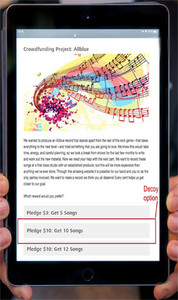Imagine sitting in an ice cream shop. A "sugar cone" with one scoop costs 3 euros. With a second scoop, it comes to 4 euros, but for just 50 cents more, you can get a big cone with three scoops. Some people may want to eat less ice cream. But for many, it's hard to pass up a good deal.
Adding a third option to make something else - usually the higher prized item - more attractive is a common marketing strategy. But since the 1980s, scholars have debated whether this attraction effect through a "decoy option" actually works in real life.
In a new, detailed study, information systems scientists led by WiSo professor Markus Weinmann (Cologne Institute for Information Systems (CIIS)) now underpin the argument that decoy options can change consumer preferences in real marketplaces. For the first time, the researchers are testing this approach in digital markets, where billions of people make decisions every day.
For their study, Markus Weinmann, Abhay Nath Mishra (Iowa State University), Lena Franziska Kaiser and Jan vom Brocke (both University of Liechtenstein) randomly assigned 4,000 participants to eight experiments based on reward-based crowdfunding (RBC) campaigns, including one with a real Swiss watch company. To test whether the decoy options influenced consumer preferences, the researchers designed experiments with different scenarios and increasing levels of similarity with crowdfunding.
Rewards-based crowdfunding is increasingly becoming a significant alternative source of funding for entrepreneurs, they said. The latest metrics from the Kickstarter platform, for example, showed that 21 million people donated more than $6,7 billion to around 223,000 successfully funded projects.
In reward-based crowdfunding markets, entrepreneurs set a fundraising goal with a deadline for their project. Funders choose from different reward menus, pledging a certain amount of money to receive a product or a sample of the project to be funded. Whether the entrepreneur receives the money and the funders get their rewards depends on whether the project meets the fundraising goal by the set deadline.
In one experiment, participants were presented with a hypothetical crowdfunding project for a music album. It included a description of the music, album art, and two options in the rewards menu (e.g., pay $3 to get 5 songs; pay $10 to get 12 songs). 60% of participants chose the cheaper option.
When the researchers repeated the study with a new group of participants, they added a decoy option (pay $10 to get 10 songs). Realizing that they could get two more songs for the same price, over 70% of the participants chose the "pay $10 to get 12 songs" option.
The attraction effect can shift preferences from a low-priced to a high-priced reward by about 28%, which is an important finding, Markus Weinmann and his co-authors note. "This is a significant leap that can turn an entrepreneur's project into reality," points out Abhay Mishra, for example. "Our findings can help artists, innovators, and creators build smarter and more effective reward menus to achieve their fundraising goals."
In that sense, using decoy is by no means unethical, especially in crowdfunding. Moreover, the attraction effect only works if someone doesn't have a strong preference. Someone who detests reading a book on a screen is not going to be swayed by a decoy with a digital download option.
The study is published in the journal Information Systems Research:
